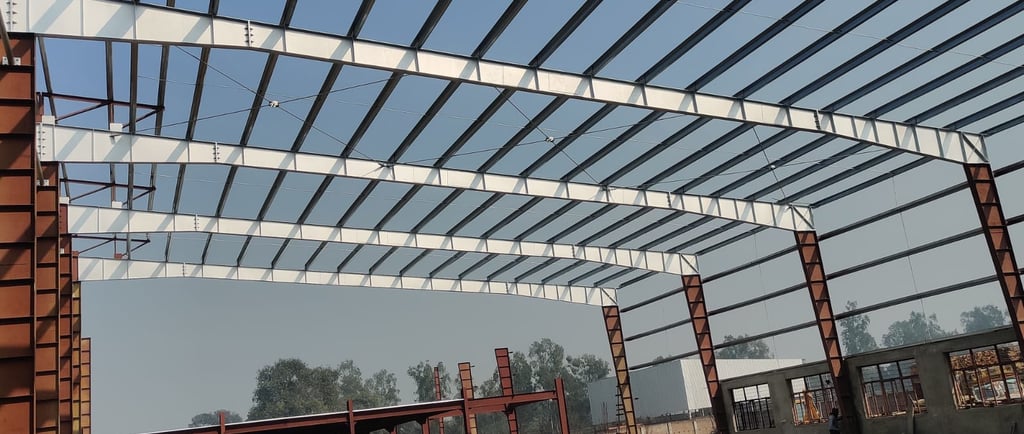

Introduction
Pre-engaging building planning is a crucial step in ensuring the successful execution of any construction project. It involves careful consideration of various factors such as design, materials, cost, and problem-solving techniques. In this article, we will explore the key aspects of pre-engaging building planning and provide valuable insights on creating PEB (Pre-Engaged Building) workflows, managing costing, and resolving common problems.
Creating PEB Workflows
PEB (Pre-Engaged Building) workflows are an essential component of the planning phase. They help streamline the construction process and ensure efficient utilization of resources. Here are some key steps to consider when creating PEB workflows:
1. Define Project Goals and Objectives
Clearly define the goals and objectives of the construction project. This includes determining the purpose of the building, the desired functionality, and any specific requirements or constraints.
2. Conduct Feasibility Studies
Performing feasibility studies is crucial to assess the viability of the project. This involves evaluating factors such as site conditions, environmental impact, regulatory requirements, and potential risks. It helps identify any potential obstacles or challenges that may arise during the construction phase.
3. Develop a Detailed Design Plan
Collaborate with architects, engineers, and other stakeholders to create a detailed design plan. This plan should include architectural drawings, structural calculations, electrical and plumbing layouts, and any other relevant specifications. It is essential to ensure that the design plan aligns with the project goals and meets all necessary regulations.
4. Determine Material Requirements
Identify the materials required for the construction project. Consider factors such as durability, cost-effectiveness, and environmental impact when selecting materials. It is also important to ensure that the chosen materials are readily available and meet the required quality standards.
5. Establish a Construction Schedule
Develop a comprehensive construction schedule that outlines the timeline for each phase of the project. This includes setting milestones, allocating resources, and determining the sequence of tasks. A well-planned construction schedule helps manage costs, minimize delays, and ensure efficient project completion.
Managing Costing
Cost management is a critical aspect of pre-engaging building planning. Proper cost estimation and control are essential to ensure the project remains within budget. Here are some key strategies for managing costing effectively:
1. Accurate Cost Estimation
Thoroughly analyze all project requirements and create a detailed cost estimate. Consider factors such as labor, materials, equipment, permits, and any additional expenses. It is crucial to account for potential contingencies to avoid cost overruns.
2. Regular Cost Monitoring
Implement a system for regular cost monitoring throughout the construction project. This involves tracking expenses, comparing actual costs against the estimated budget, and identifying any deviations. Regular monitoring allows for timely adjustments and helps prevent cost overruns.
3. Value Engineering
Consider value engineering techniques to optimize costs without compromising quality. This involves identifying alternative materials, construction methods, or design modifications that can reduce expenses while maintaining project integrity.
4. Vendor and Supplier Negotiations
Negotiate with vendors and suppliers to secure competitive prices for materials and services. Building strong relationships with reliable suppliers can help reduce costs and ensure timely delivery of materials.
5. Contingency Planning
Develop a contingency plan to address unforeseen events or changes in project scope. Allocating a portion of the budget for contingencies helps mitigate financial risks and ensures that the project can adapt to unexpected circumstances without significant cost implications.
Resolving Problems
Construction projects often encounter various challenges and problems that require prompt resolution. Here are some effective strategies for resolving common problems:
1. Effective Communication
Establish clear lines of communication among all stakeholders involved in the project. Regularly communicate updates, address concerns, and encourage open dialogue. Effective communication helps identify and resolve problems before they escalate.
2. Collaboration and Teamwork
Promote collaboration and teamwork among all members of the project team. Encourage the sharing of ideas, expertise, and perspectives. By working together, the team can collectively identify and address problems, leading to more efficient problem-solving.
3. Proactive Risk Management
Implement a proactive risk management strategy to identify and mitigate potential problems. Conduct regular risk assessments, develop contingency plans, and establish protocols for addressing unforeseen events. By anticipating and addressing risks early on, problems can be resolved more effectively.
4. Utilize Technology
Leverage technology tools and software to streamline project management and problem-solving processes. Construction management software can help track progress, manage tasks, and facilitate collaboration. Additionally, Building Information Modeling (BIM) technology can assist in visualizing and resolving design conflicts before construction begins.
5. Continuous Learning and Improvement
Encourage a culture of continuous learning and improvement within the project team. Regularly evaluate project performance, identify areas for improvement, and implement corrective measures. By learning from past experiences, future problems can be anticipated and resolved more efficiently.
Conclusion
Pre-engaging building planning plays a vital role in ensuring the success of construction projects. By creating effective PEB workflows, managing costing efficiently, and implementing strategies for problem resolution, construction teams can enhance project outcomes and minimize risks. By following the guidelines outlined in this article, construction professionals can navigate the complexities of pre-engaging building planning with confidence and achieve successful project completion.
